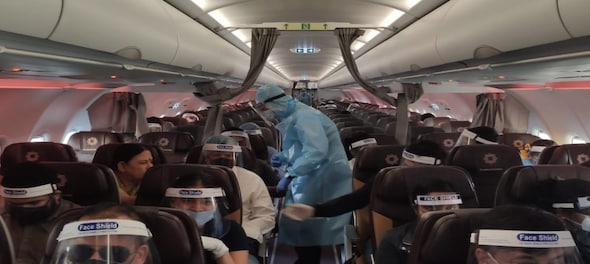
Have you travelled by air recently? If so, you’d know what airport and flight scenes are like. They may not be as crowded as pre-pandemic levels but you’ll surely understand what the ‘revenge travel’ buzz is all about.
Domestic demand is trending upwards across regions be it passengers from metros like Delhi, Mumbai and Bengaluru, or areas like Goa, Patna, and Srinagar.
The Directorate General of Civil Aviation (DGCA) recently released air traffic data according to which domestic aviation registered an annual growth of 20.54 percent during the January to September 2021 period. Passengers carried by domestic airlines during the period were 531.11 lakh as against 440.60 lakh during the corresponding period last year.
However, the structure of aviation demand has changed. You’ll hardly see suited and booted people at the airport, all set to attend an official meeting in another city, thanks to video calls becoming the preferred mode with the COVID-19 pandemic setting in last year.
A report suggests you may also not see a weekend rush as crazy as before but there’ll definitely be people headed for short trips.
According to a report by advisory firm Airavat Transport Technology Ventures (AT-TV), though domestic air travel is trending upwards, business travel remains tepid as a portion of business demand has been replaced by technology.
The report titled 'Indian aviation: the deception of demand' also pointed to a significant decline in frequent morning-evening trips and weekend getaways. The average length of the trips that people are taking is over four days, the report said. Moreover, people have become more complacent, it added.
Also Read: Indian Hotels sees uptick in leisure travel; surge in advance bookings for Diwali, Christmas
Reflecting on the business side of the matter, the report based on AT-TV assessments pointed to most flyers picking IndiGo and Spicejet as their preferred airline. “Indian aviation is headed towards a duopoly,” it said. While the market share forecast for IndiGo was put at 52 to 58 percent, it was at 8 to 12 percent for Spicejet.
Next in line was Go First followed by the three airlines now under the Tata Group-AirAsia India, Vistara and Air India. The report also added the Rakesh Jhunjhunwala backed- Akasa Air, likely to be a budget airline, to the list and another startup of which details were not shared.
“The strongest player in the market (financially) also commands the highest market share. The price sensitivity is so high that in spite of a monopoly market share it does not translate into pricing power,” the report claimed.
According to AT-TV, the two new startups that are likely to enter the domain will further erode margins and put pressure on pricing.
However, do you know what’s different about each airline in India? The report says nothing. “All this while India’s airlines fly in a sea of sameness,” AT-TV claimed. It explained that there are no secondary airports, the airlines have similar fleets, networks, revenue models as well as strategies.
According to the report the airlines’ cash-flows are aided by price floors and structural challenges, including structural costs, liquidity, recourse risk, default risk, talent acquisition and retention, cash-backed deposits and, FX and limited international flows, remain.
Now, that domestic airlines have been allowed to operate at full capacity, it is yet to be seen if the structure of aviation demand will change. "We are quite bullish about the overall growth and demand for domestic travel," IndiGo earlier this month told news agency PTI.
Caps like minimum and maximum fares will continue to be applicable on domestic flights and flights with less than two hours journey will also not serve or sell meals.
(Edited by : Kanishka Sarkar)
Check out our in-depth Market Coverage, Business News & get real-time Stock Market Updates on CNBC-TV18. Also, Watch our channels CNBC-TV18, CNBC Awaaz and CNBC Bajar Live on-the-go!


Lok Sabha elections 2024: Star Chandru, DK Suresh, Hema Malini among richest candidates in second phase
Apr 24, 2024 5:18 PM
Pannian Ravindran: Thiruvananthapuram's Left candidate who's lived in party office for 40 years
Apr 24, 2024 11:47 AM

